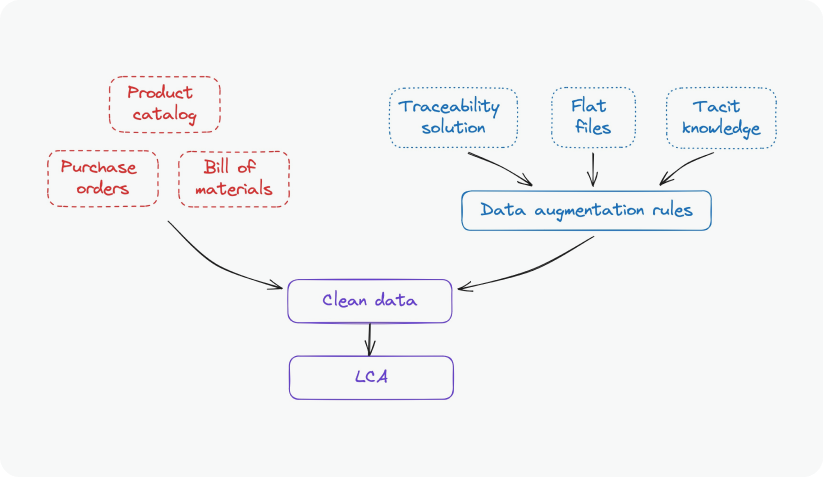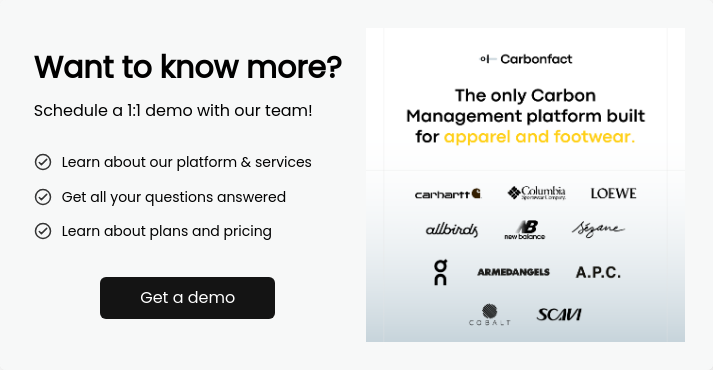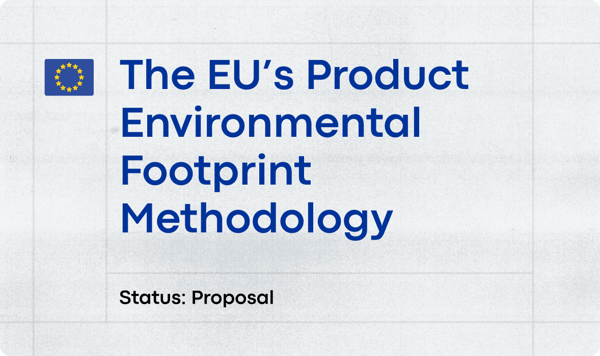The ultimate goal we share with our customers is to lessen their environmental footprint. Our approach is to do this through product-level life cycle assessment (LCA). Indeed, in order to significantly reduce your impact on the environment, you need to know what you’re dealing with. For most fashion and textile brands, the main culprit are Scope 3 emissions. The latter can be measured in an actionable manner through LCA.
Our platform is suited to measure the footprint of each and every apparel item our customers manufacture. We can do this at a fine-grained level. For instance, we take into account size and color variants of the same model. We even handle the fact that a product’s materials may come from different suppliers.
Watch the video below or read on to learn about how Carbonfact enhances data with Data Augmentation Rules.
Watch the Video
Overcoming challenges:Incomplete data and unstructured information
At its core, product-level LCA revolves around data. The more information is available, the more accurate the LCA is. One thing we understand is that our customers are worried about not having all the necessary information. You’re in luck if you’re working with Carbonfact, because we eat incomplete and messy data for breakfast.
For instance, it’s typical to not have product weight information available. We can deal with this using statistical methods, as explained in a previous blog post. Dealing with missing product weights is just one form of what we call “Data Augmentation Rules”. These are ad-hoc rules we put in place to complement the data you have at your disposal.
Let’s say you have a list of your products, along with their composition. You know the materials that compose each one of your products. However, you don’t know what country said materials come from. One way to proceed is to ask your suppliers where they are sourcing their materials. Once they answer you, you have difficulty ingesting that information into your system. That’s because your system isn’t directly connected to your email, and because you received an answer in an unstructured format.

How Carbonfact enhances data with Data Augmentation Rules
This is commonplace. We are used to working with customers who can provide a first data export, but are then not able to swiftly add information to the export. This is where data augmentation rules come into play. On our side, we can manually define the rules that will enrich the data you have exported.
The nice thing about our Data Augmentation Rules is that they can be created from different sources. For instance, if you have a traceability solution, we can connect to it and build rules on the fly. For example, let’s say you are sending out forms to determine the share of renewable energy in use at your suppliers. We can turn the form answers into data augmentation rules, which will then be automatically connected to your data export. In turn, this information will then show up on your Carbonfact platform.
The takeaway here is that Carbonfact acknowledges that your data system is not as ideal as you’d like it to be. We came up with data augmentation rules as a mechanism to bypass whatever difficulties you may be facing. The ultimate goal is to reduce your emissions. That goes by collecting accurate data to make informed decisions. Think of data augmentation rules as a shortcut to gather the necessary data.







 Lidia Lüttin
Lidia Lüttin

![[Guide] Carbon accounting for fashion, textile, apparel, and footwear companies](https://www.carbonfact.com/hs-fs/hubfs/CA%20-%20Opt1.png?width=600&name=CA%20-%20Opt1.png)
 Angie Wu
Angie Wu